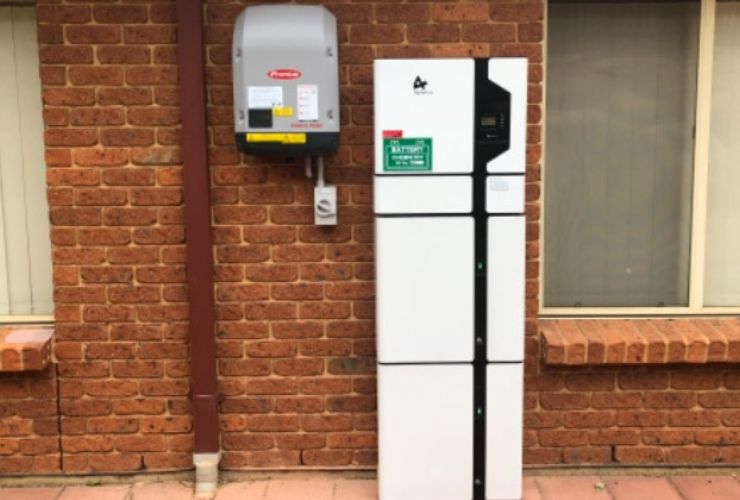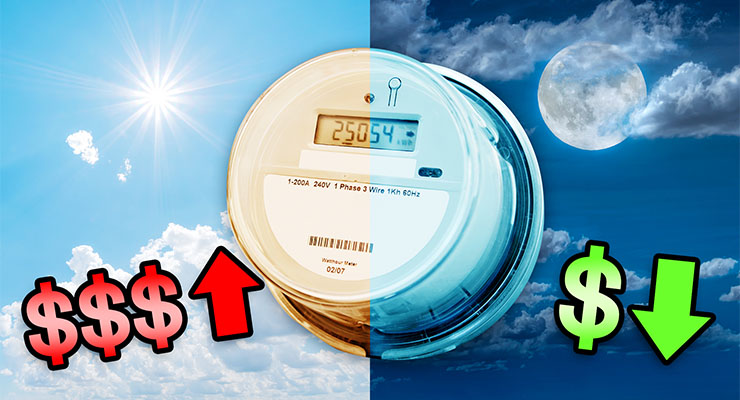Fast read
Time-of-day (TOD) tariffs significantly impact solar battery payback. TOD rates vary by time, affecting savings compared to flat rates. Under flat rates, savings are consumption minus feed-in tariff (FIT) times battery capacity. TOD pricing considers peak evening rates, off-peak charging, and shoulder rates, utilising home battery storage strategically.
TOD benefits include off-peak charging, solar energy time-shifting, and load shifting, potentially improving battery payback. A comparison shows better payback (8.8 years) with TOD versus flat rates (14.5 years).
Factors like local costs, efficiency, and solar availability matter. Engaging qualified local suppliers is advised for optimal decisions on solar and batteries. Trusted partners ensure reliable advice for better TOD-driven battery payback.
How do Time-of-Day tariffs affect the payback on solar batteries?
In this case, it is worth comparing the payback from a simple scenario to see the difference in payback. For this, we will compare the savings from a battery for a flat rate tariff scenario versus a Time-of-Day tariff pricing situation.
Difference between these two tariff structures
Firstly, it’s worth understanding the difference between these two electricity tariff structures. With a flat rate Tariff structure, there is a single charge for electricity purchased regardless of the time of day or week.
Under Time-of-Day Tariffs, charges for electricity vary based on the time of day, day of the week and time of year. These charges are to reflect the actual cost of electricity at those times. The peak times for electricity demand and pricing are during the evenings on weekdays during the summer and winter months when families are at home, cooking dinner, using air conditioners and heaters, etc.
By offsetting a higher evening charge of Time-of-Day tariffs with a battery, the savings are increased, and the payback period is improved. While electricity prices vary a little across the country for this example we will compare flat rate pricing with TOD pricing using Energy Australias Flexi pricing in the Ausgrid electricity network.

Flat Rate
Consumption Tariff 30.02c p/kWh
Solar FIT 7.6c p/kWh
Time-of-Day Tariff
Peak 57.81c p/kWh (evenings Mon to Fri from Nov to March & June to Aug)
Off Peak 19.79c p/kWh (10 pm to 7 am year round)
Shoulder 27.7c p/kWh (7 am to 2 pm daily plus all other periods)
We will calculate savings based on the above options based on a household having and using the full capacity of a Tesla Powerwall 2 (13.5kWh) that costs $16k to install.
We assume that the battery will be charged by solar during the day and discharged during the night during Peak pricing where available or otherwise shoulder pricing.
Flat Rate Calculation
In this case, the savings will be the flat consumption rate less the Feed Tariff payment (as this is what you earn without a battery) multiplied by the usable kWh of the battery.
So this is calculated as;
(30.02c (Consumption)– 7.6c(FIT)) x 13.5kWh (Tesla capacity) = $3.02.67 savings per day
= $1102.74 per year
Payback = $16,000/ $1102.74 = 14.5years payback
Time of Day Tariff Calculation
Similarly, the savings are based on the difference between the evening consumption tariff and the Feed-in Tariff for the battery being used in the evening weekday peak rates for 174 days and shoulder rates for the other 191. We have to take this into account.
Nights with Peak Rates
(57.81c – 7.6c) x 13.5kWh = $6.77835 per day
X 174 days = $1294.66
Nights at Shoulder Rates
(27.7c -7.6c) x 13.5kWh = $2.7135 per day
X 191 days = $518.28
Total Annual Savings = $1294.66 + $518.28 = $1812.94
Payback = $16,000/ $1812.94 = 8.8years

Here’s how Time of Day Tariffs can impact battery payback:
Off-peak charging:
With time-of-day tariffs, off-peak hours typically have lower electricity rates. If you have a battery system and can charge it during these off-peak periods when electricity prices are low, you can store energy at a cheaper rate. This can improve the economics of the battery system, as you can use the stored energy during peak hours when electricity rates are higher, thus avoiding the need to draw power from the grid connection.
Time-shifting excess solar energy:
If you have a solar panel system, time-of-day tariffs can allow you to time-shift excess solar energy production. During the day, when solar panels generate more electricity than you consume, you can store the excess energy in the battery. Then, during the evening or nighttime, when electricity rates are typically higher, you can use the stored energy from the battery instead of purchasing electricity from the grid. This can increase the self-consumption of your solar energy and potentially improve the payback of the battery system.
Load shifting and peak demand reduction:
By strategically using the battery during peak demand periods, you can reduce the electricity you draw from the grid when rates are high. Instead, you can rely on the stored energy in the battery to power your home or business. This load shifting can help you avoid higher electricity charges and potentially improve the payback of the battery system.
With potential payback on flat-rate pricing of 14.5 years versus 8.8 years with Time-of-Day pricing. TOD pricing provides better payback for a battery.
Important to note is that the actual impact on battery payback will depend on various factors, including the cost of electricity, the rate structure, the size and efficiency of the battery system, the availability and cost of renewable energy sources like solar, and the electricity consumption patterns of the property. The upfront cost of the battery system and its expected lifespan will also influence the payback period. Therefore, conducting a detailed analysis considering these factors is advisable to evaluate the potential improvement in battery payback with mandatory TOD metering.

